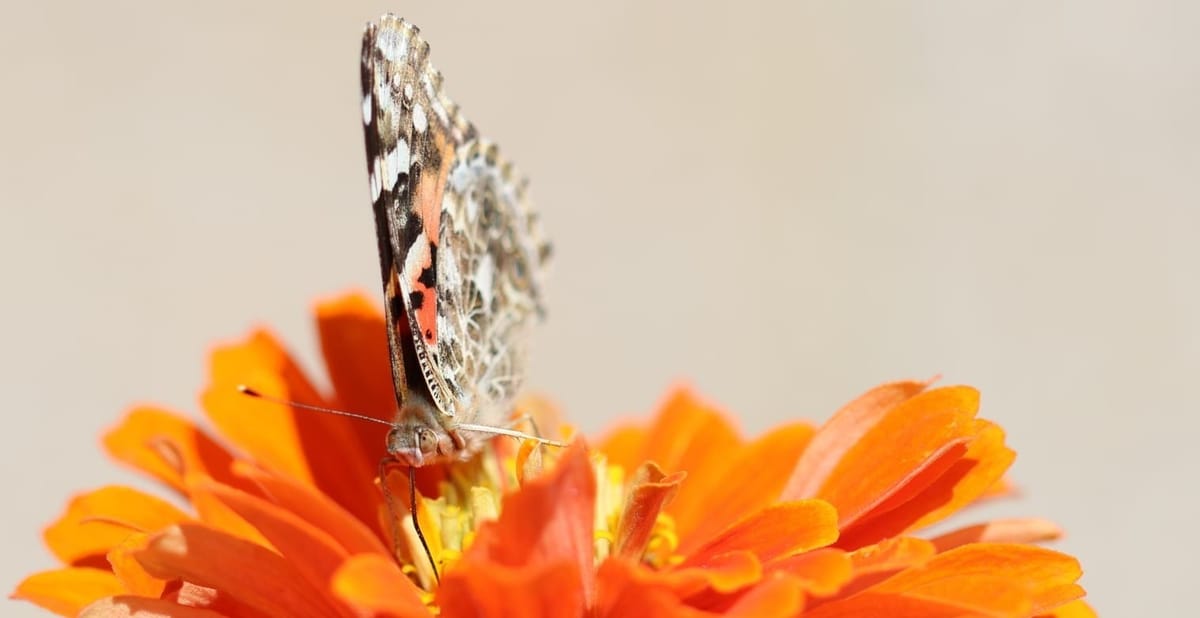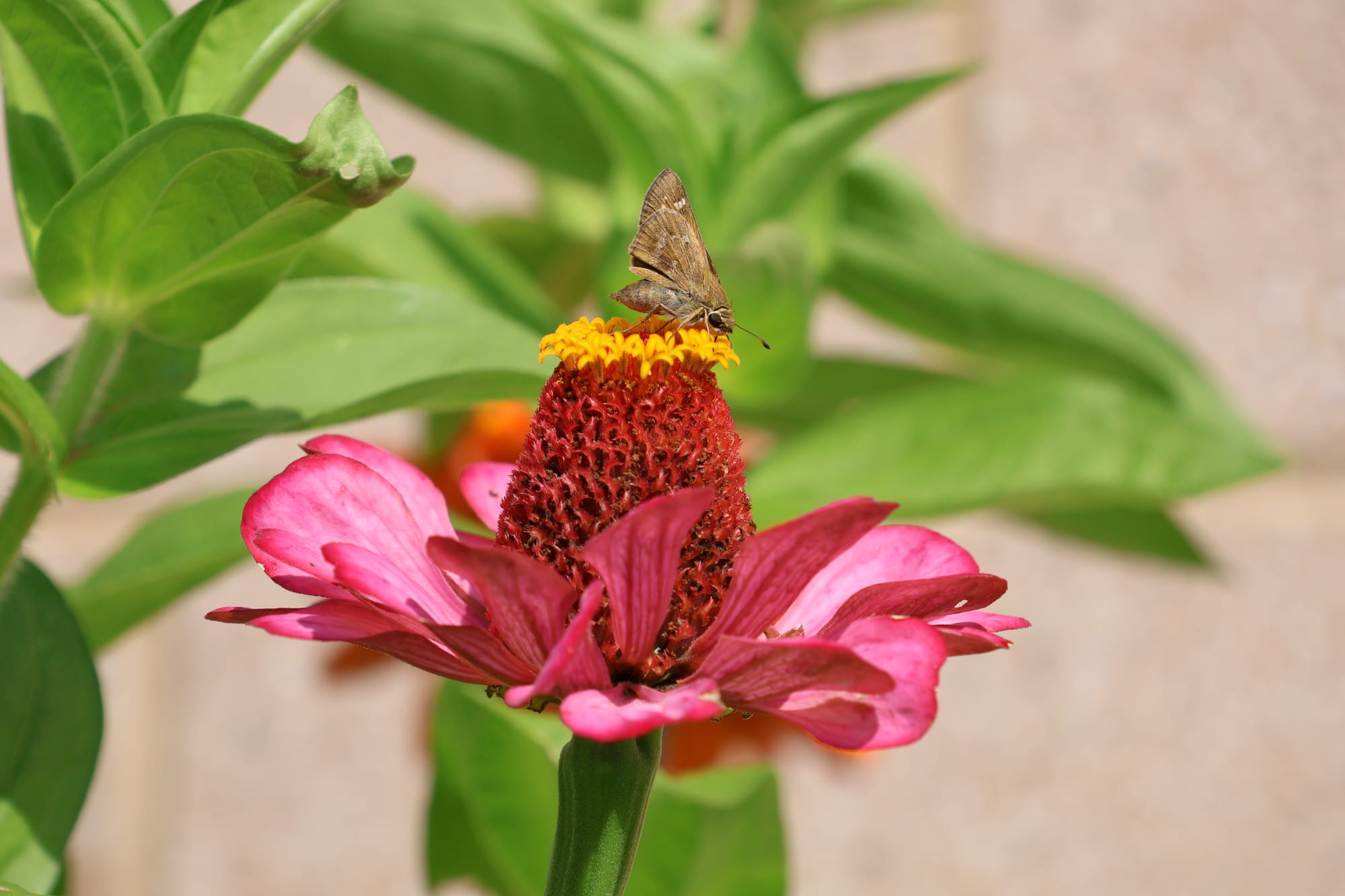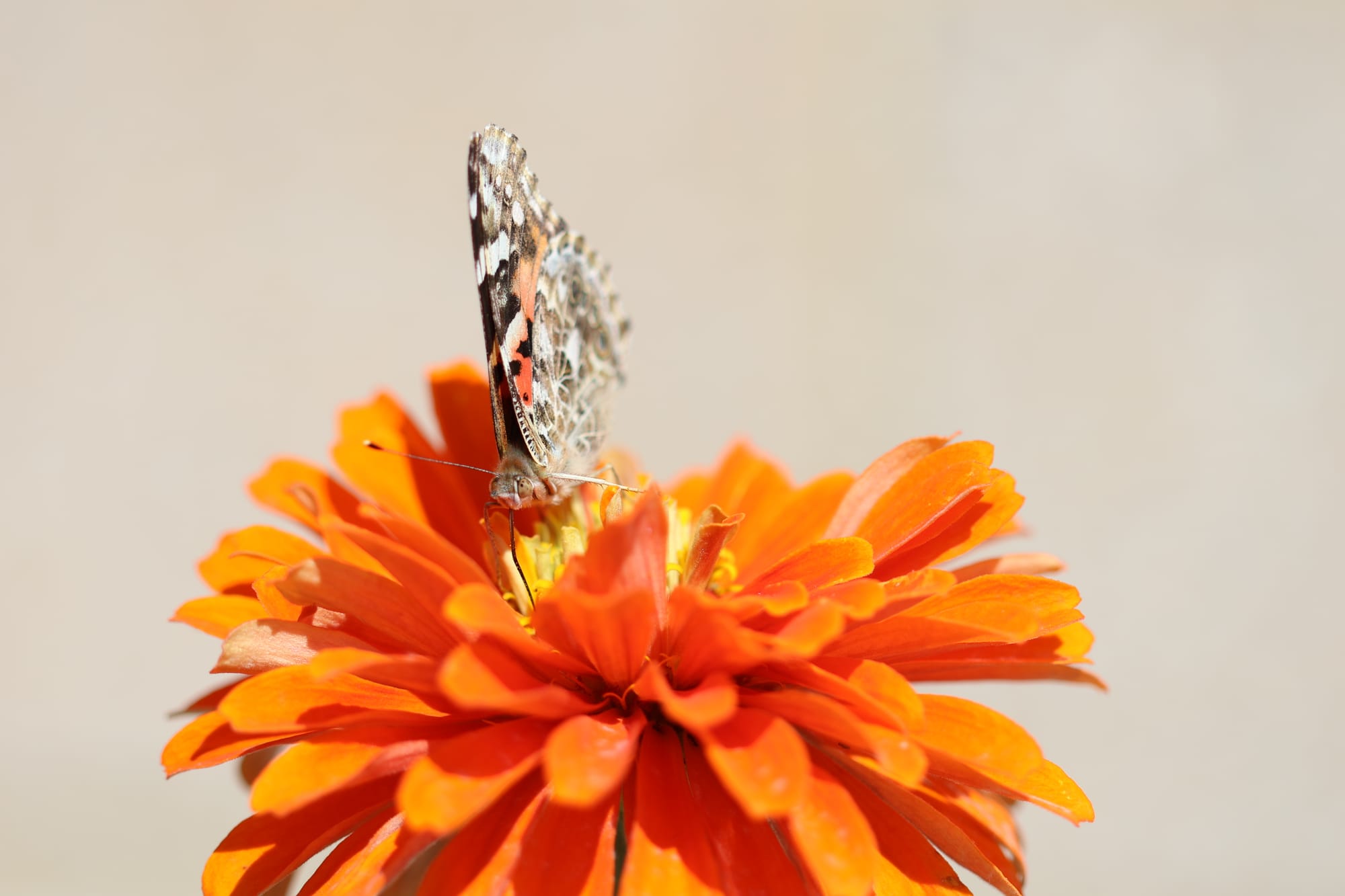The Butterflies of MSMHS
The gardens of MSMHS have many species of insects, including butterflies. Here's a look at two common species, with photography by student Maddy Campbell.

At MSMHS, there is a small garden outside of the aquaculture lab that is home to many species of plants. These plants attract insects looking for food, such as the sachem skipper and the painted lady, both species of butterfly.
The sachem skipper is a small species of butterfly in the family Hesperiidae, with a wing span of 35–41 millimeters . The skipper can be found all over North American (going as far north as central Canada), but will spend its winters in Mexico and the southern United States.

The skippers mate before winter, from April to June . The skipper will lay a very small egg (less than a millimeter in diameter) on a host plant of its choice. When the eggs hatch, a very small larva will leave the egg and, after development, undergo metamorphosis to eventually become an adult sachem skipper.
The painted lady, another butterfly species found at MSMHS, has a wing span of 40–75 millimeters. This relatively small species is found all over the world on every continent except in Antarctica and South America.

Painted ladies are not particular about their host plant to lay eggs on, a relatively uncommon trait among butterflies. Painted ladies have been known to lay eggs on more than 300 hundred species of plant. They also aren't particular about the flower they get their nectar from. The reason for this is the strange eye structure of the painted lady that almost no other butterfly has. Their eyes contain ultraviolet, blue, and green opsins, but lack red receptors. This means that they are not sensitive to red light and can’t tell the difference between yellow light and orange light or orange light and red light.





